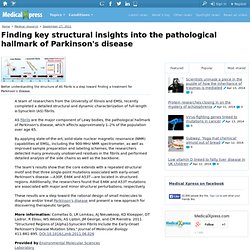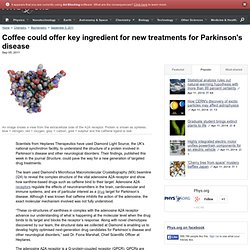

Finding key structural insights into the pathological hallmark of Parkinson's disease. A team of researchers from the University of Illinois and EMSL recently completed a detailed structural and dynamic characterization of full-length α-Synuclein (AS) fibrils.

AS fibrils are the major component of Lewy bodies, the pathological hallmark of Parkinson's disease, which affects approximately 1–2% of the population over age 65. By applying state-of-the-art, solid-state nuclear magnetic resonance (NMR) capabilities at EMSL, including the 900-MHz NMR spectrometer, as well as improved sample preparation and labeling schemes, the researchers detected many previously unobserved residues in the fibrils and performed detailed analysis of the side chains as well as the backbone. The team’s results show that the core extends with a repeated structural motif and that three single-point mutations associated with early-onset Parkinson's disease —A30P, E46K and A53T—are located in structured regions. Research breakthrough takes significant step towards improving human health. Scientists Discover Genetic Mutation that Causes Parkinson's Disease. Coffee could offer key ingredient for new treatments for Parkinson's disease.
Scientists from Heptares Therapeutics have used Diamond Light Source, the UK’s national synchrotron facility, to understand the structure of a protein involved in Parkinson’s disease and other neurological disorders.

Their findings, published this week in the journal Structure, could pave the way for a new generation of targeted drug treatments. The team used Diamond’s Microfocus Macromolecular Crystallography (MX) beamline (I24) to reveal the complex structure of the vital adenosine A2A receptor and show how xanthine-based drugs such as caffeine bind to their target. Adenosine A2A receptors regulate the effects of neurotransmitters in the brain, cardiovascular and immune systems, and are of particular interest as a drug target for Parkinson’s disease. Although it was known that caffeine inhibits the action of the adenosine, the exact molecular mechanism involved was not fully understood. The adenosine A2A receptor is a G-protein-coupled receptor (GPCR).